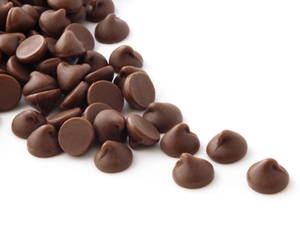The low carbon diet
Every year the average Australian household produces 14 tonnes of carbon dioxide; that’s 20 per cent of our total carbon emissions.
 Photolibrary
Photolibrary
Fortunately, there is a new diet to help you slim down and cut your carbon emissions at the same time.
Creative cooking
The low carbon diet is designed to limit our individual greenhouse emissions by cutting down on carbon-heavy foods. Favourites, like red meat and dairy, produce the highest amounts and should be eaten in moderation.
Environmental scientist Ben Reay from Carbon Neutral believes implementing the diet is simply a matter of balancing your time and learning to cook creatively.
“If you learn a few vegetarian combinations, or use a meat substitute, you can have a tasty option that is at least 60 per cent better for the environment.”
Breathe easy
Reay says the reason mass-produced food like red meat and pre-packaged goods are so eco-intensive is because of their production.
“If you’re looking at a breakdown of where carbon emissions come from, around 80 per cent come from the production of food while transport contributes about 11 per cent.”
The production of red meat, for example, requires large amounts of water and livestock feed, and produces liberal amounts of methane. It takes more than 15,000 litres of water to produce a single kilo of beef, and red meat produces 150 per cent more carbon emissions than chicken or fish.
“You only have to avoid meat for one day and you are doing more for the environment than buying everything locally,” Reay says.
While the carbon produced through the transportation of food goods is small next to the impact of red meat production, it is easy to combat and will take you one step closer to reducing your carbon footprint.
Eating only seasonal fruits and vegetables bought from your local market will cut your footprint by reducing the demand for imported goods.
Eat right
Cutting down your meat intake can lower your risk of chronic ailments like heart disease, cancer and diabetes.
It’s not necessary to cut meat out of your diet completely; choose fish for omega-3, or chicken, which is rich in protein. Both contain all of the amino acids. Reay suggests caution when replacing red meat with fish as “there are some fish you should never eat [as they aren’t sustainably fished], and there are others that are good to eat sometimes for your health and the environment.”
Meatless Mondays (see WH&F 17#2) is an initiative that began in the US in 2003, which, as the name suggests, cuts down your meat intake by approximately 15 per cent a week by going without every Monday night.
What about me?
Apart from the obvious advantages of reducing your environmental impact and providing a healthier alternative to a meat heavy diet, the low carbon diet will lighten the pressure on your hip pocket.
Reay considers the financial benefits by looking at the dollar cost per kilo of carbon dioxide.
“Oils, fruits and cereal are less than a kilo of carbon per dollar…whereas meat is about three kilos per dollar,” he says.
Just taking meat off the menu one night a week will significantly impact your wallet. Complement the financial benefit by only shopping at local markets, thereby stimulating the local economy, and enjoy the savings.
TOP KITCHEN TIPS
1. Eat less meat: Choose chicken or fish instead of beef and take a night off from meat each week.
2. Assist community effort: Reay suggests “a combined effort between food producers, retailers and consumers” will not only cut your individual footprint but help your community.
3. Eat seasonally: Only eat fruit and vegetables that are in season. Avoid picking up tropical fruits like watermelon and mango during winter.
4. Buy locally: Go to your local markets and buy from there. Not only are you reducing your emissions but you are promoting your local economy.
5. Use your space: Use your stovetop carefully by matching heat rings to saucepan size, and keeping lids on saucepans will help food heat faster.
6. Read the label: Say no to packaged food grown or processed interstate, or worse, internationally.
7. Cook in batches: Warming up the oven creates more emissions than using the microwave. So, prepare several dishes at once and freeze them for later on in the week. A full freezer works more efficiently.
8. Grow your own: There is nothing like having your own vegie patch in the backyard; it gets you outdoors while providing you with a virtually carbon-free healthy alternative.
9. Eat raw: The less you have to cook, the more emissions you save.
10. Save energy: Keep up your energy saving by turning off unused appliances, lights and recycling packaging properly.
Check out the carbon calculator at: www.carbonneutral.com.au/carbon-calculator.html
- Prev:Party Panic Diet
- Next:Drop a dress size diet
-
Weight Loss Diet - Needs Based Planning
Your weight loss program depends on your diet plan. The wrong diet pl
-
How To Drink Your Excess Weight Away In 8 Weeks
Excess pounds are a problem to numerous of people, but burning the
-
Healthy Diet – The five a day rule
Healthy diet is the basic concept to mak
-
Best Exercises to Lose Stomach Fat at Home
Many people try to lose their belly fat and dream about a flat one
-
Empty Your Colon of Toxic Waste With This Cleansing 4-Ingredient Apple Honey Mixture
Colon cleanses have been common procedures even since ancient Gree
-
Diet and Nutrition
Diet and Nutrition is the main key facto
- DON'T MISS
- Weight Loss Exercises And Supporting Diet
- Do You Know What Happens If You Drink Coconut Water For 7 Days on Empty Stomach
- 4 Products That Hydrate The Body Better Than a Glass Of Water
- How To Do Complete Body Sugar Detox, Lose Weight And Improve Your Health
- This Is How To Remove Bloated Belly In Just 60 Seconds With This Incredible Belly-Fat Burning Recipe!
- Drink This Every Night and Say Goodbye to Belly Fat!
- The ultimate list of fat burning foods
- Stay Slim for Good: AJ Cooks Success
- What it Takes to Lose Weight
- Banana Ginger Smoothie to Help Burn Stomach Fat




